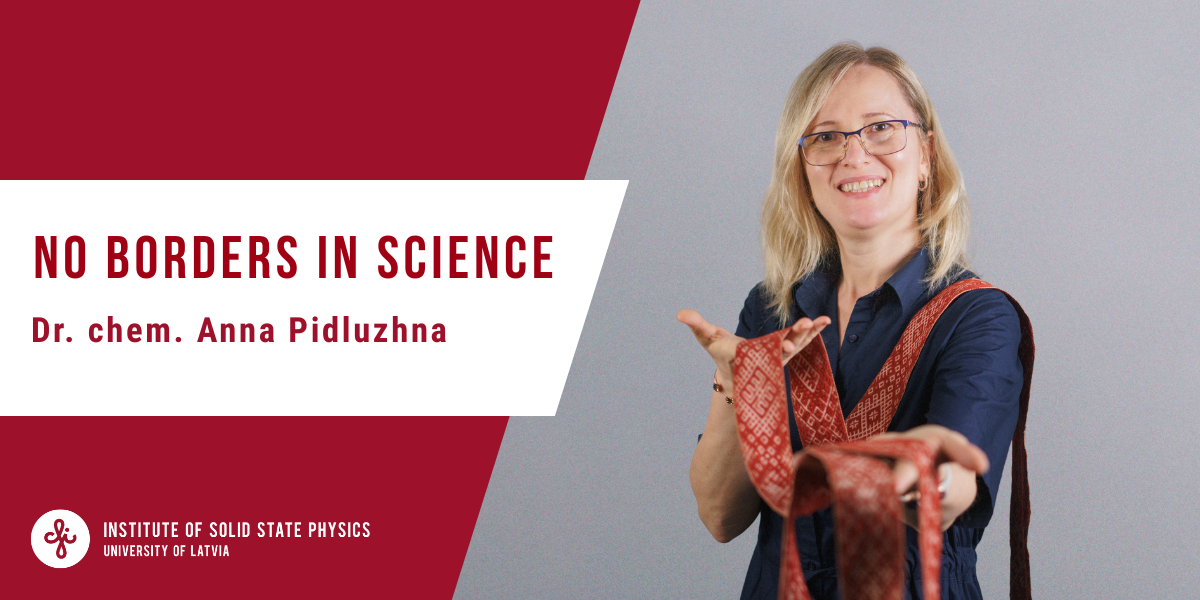
No Borders in Science is a series of interviews with Institute of Solid State Physics (ISSP UL) scientists and employees who are closely connected to the world outside of Latvia – by birth, attained education, or just their daily work. Through their stories we want to highlight the institute as a part of the global scientific network – a centre of excellence where collaboration isn’t limited by geography and the exchange of ideas, experiences, and efforts is placed at the forefront. This time, we speak with Anna Pidluzhna about unravelling the mysteries of science and the value of a chemist in an institute of physics.
In your own words, what is your scientific specialty? Do you have any topics of interest outside of it?
By education and by passion, I’m a chemist working in two distinct fields: lithium-ion batteries, and LEECs and OLED technologies. What I find especially engaging about these areas is their deep connection to energy transformation. Whether it’s storing energy or converting it into light, the underlying chemistry is both complex and elegant – a fascinating combination to work with.
Outside my core research, I’m always curious about how systems function – from materials and machines to social dynamics and creative processes. Exploring how things work, in science or beyond it, is something that constantly inspires me.
How did your journey in science start?
My interest in science was sparked by a love of solving puzzles and uncovering what lies beneath the surface. I’ve always enjoyed reading, especially stories that require logic and persistence to uncover hidden truths. That mindset translated naturally into science: investigating phenomena, analysing data, and trying to understand complex systems.
What fascinated me early on – and still does – is that science isn’t just about finding answers, but about asking the right questions. That blend of structure, creativity, and discovery is what drew me in and continues to drive me forward.
What led you to ISSP UL?
My move to the Institute of Solid State Physics, University of Latvia came at the intersection of curiosity and opportunity. I was looking for a place where I could work on challenging materials science problems while being part of a supportive and interdisciplinary community. ISSP UL offers just that – with modern infrastructure, access to advanced equipment, and an environment that encourages collaboration and international exchange.
I’m currently part of the Horizon Europe project NoVOC (Grant No. 101069612), which aims to develop greener and more sustainable battery manufacturing technologies. Being part of such projects adds real-world relevance to my work and aligns closely with the institute’s mission.
How does the ISSP UL assist scientists (proliferating participation in projects and events, supporting funding acquisition, endorsing growth opportunities, etc.)?
The institute actively supports researchers in multiple ways – from helping identify suitable funding programs and facilitating international partnerships to providing opportunities to present research and grow professionally.
There’s also a culture of mentorship and openness here, which makes it easier to navigate complex projects or explore new ideas. ISSP UL encourages participation in collaborative research frameworks and offers practical support for conference travel, proposal writing, and skill development – all of which are essential for scientific growth.
Currently, what is your next goal – in science, career-wise, or just in general?
To not go into great scientific detail, I’ll just say that for my next goal I’m focused on deepening scientific excellence – mine and the institute’s – and the community influence of my work.